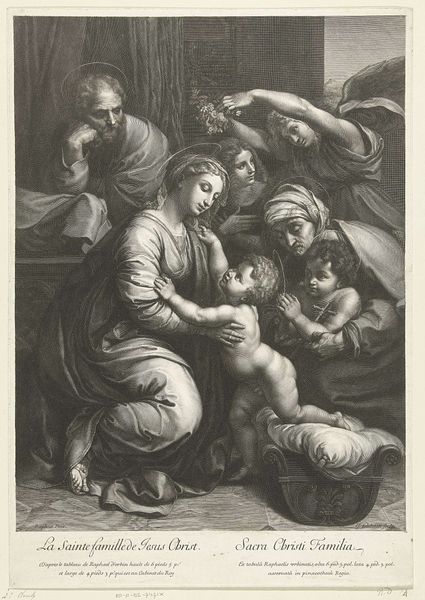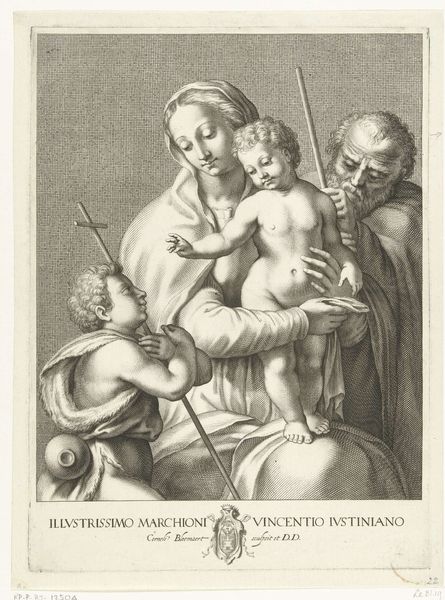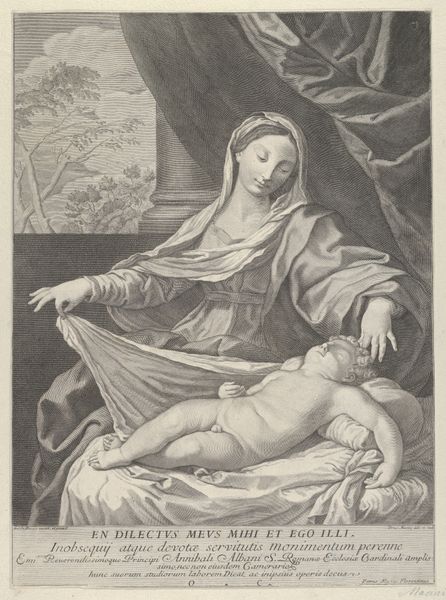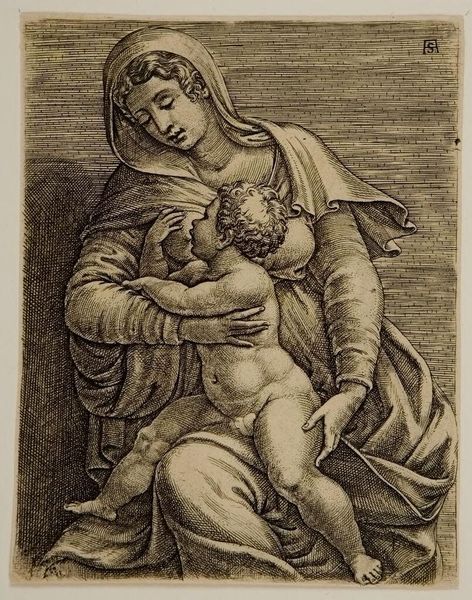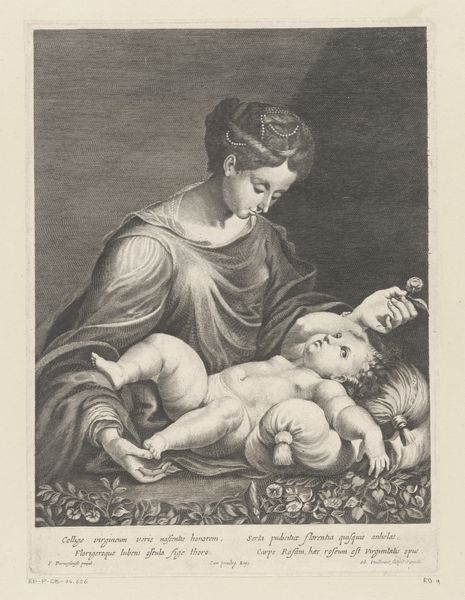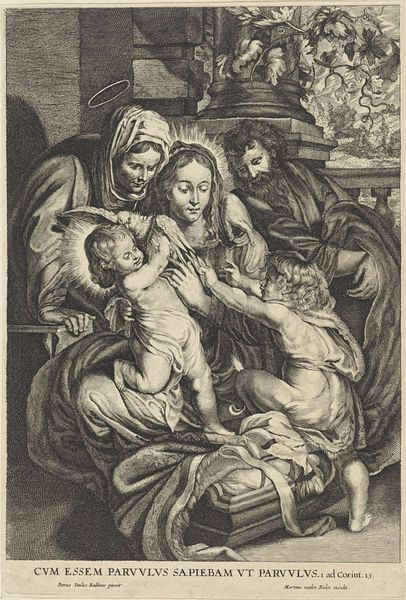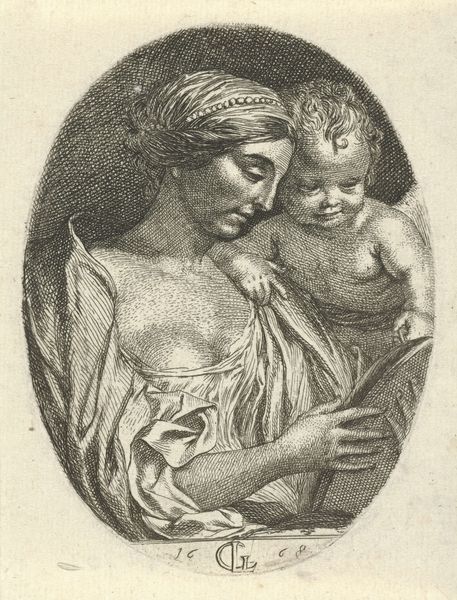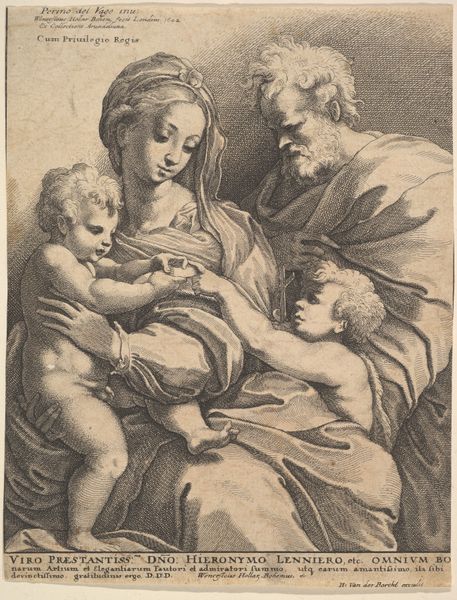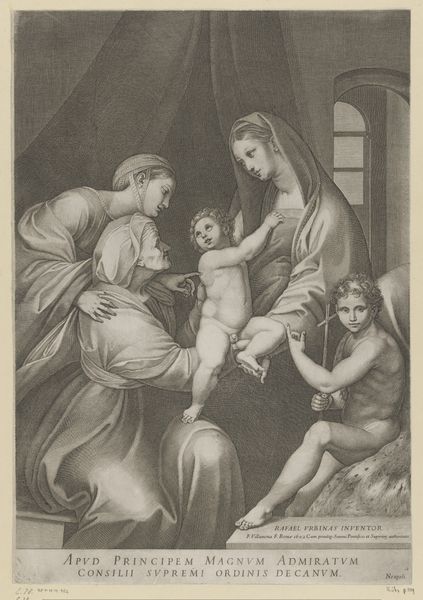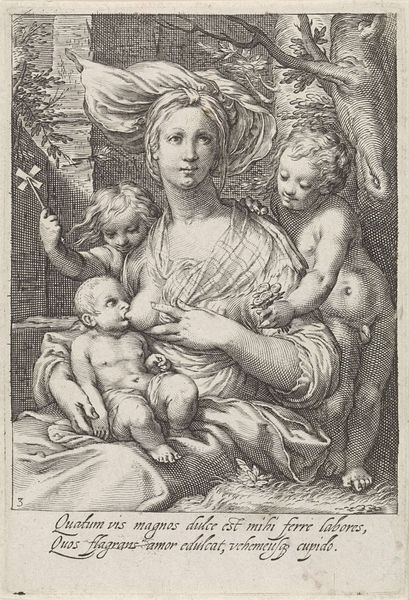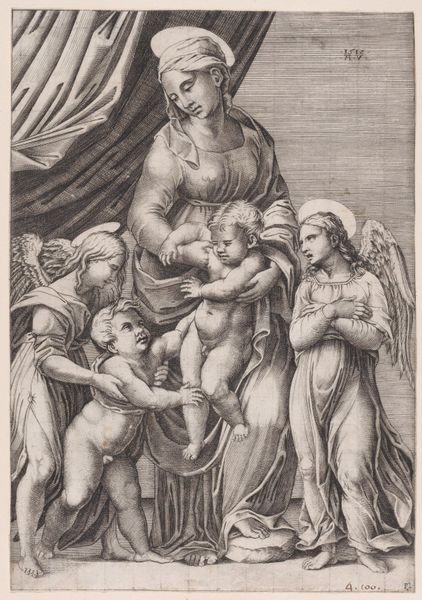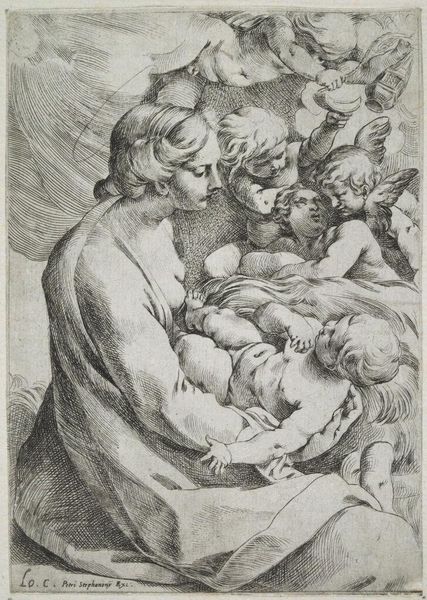
drawing
#
portrait
#
drawing
#
baroque
#
figuration
Dimensions: height 518 mm, width 345 mm
Copyright: Rijks Museum: Open Domain
Curator: This drawing is titled "Heilige Familie," or "Holy Family," created sometime between 1702 and 1759 by Jan Wandelaar. It’s currently held here at the Rijksmuseum. Editor: It’s quite striking! There's an immediate intimacy and drama. The figures are closely grouped, creating a sense of tension or maybe just heightened emotion? The lighting really emphasizes their expressions. Curator: Indeed, and the drama stems in part from Wandelaar’s technique. This is a drawing, so likely silverpoint, chalk, or ink, which offered him incredible precision in rendering light and shadow. This allows him to sculpt the figures on the page. Consider also that this imagery played a huge role in the social landscape of the time, reflecting and reinforcing family structures as ideal. Editor: I’m also curious about the use of paper itself. Was it mass-produced? Handmade? The kind of paper certainly impacts the cost of the work, who could access it, and ultimately, who the image was intended for. It is very difficult to find detailed documentation on that topic about the work. Curator: That's a good point about access. Reproductions of this sort circulated widely, disseminating these religious themes far beyond the elite. It played an interesting role in shaping public perception and reinforcing societal values around religion. Editor: It makes me wonder, what kind of workshops would have supported Wandelaar’s production? Were these family-run affairs, employing artisanal knowledge passed down through generations, or were they becoming more industrial, more specialized? Curator: Very likely artisanal, given the period. Family workshops were indeed central to art production and distribution. It highlights how deeply embedded artistic practice was in the economic and social fabric. Editor: Right, so viewing the "Heilige Familie" as not just a work of faith, but of work. I mean, by recognizing the production process, we see art and culture as inherently intertwined with labor, materials, and consumption, shifting how we engage with it. Curator: A valuable point. Wandelaar’s work exists not in a vacuum but as a product of socio-economic and religious forces shaping artistic practice. Editor: It gives me a greater appreciation to consider the hand that created this work, the conditions of its making, and the purpose it served. Curator: Agreed. Bringing those perspectives to our understanding truly enhances the artwork's enduring appeal.
Comments
No comments
Be the first to comment and join the conversation on the ultimate creative platform.
